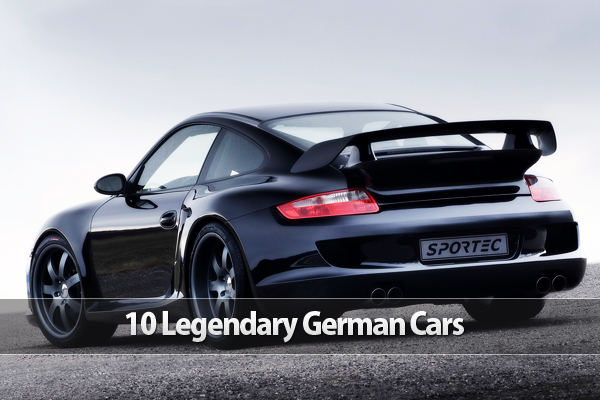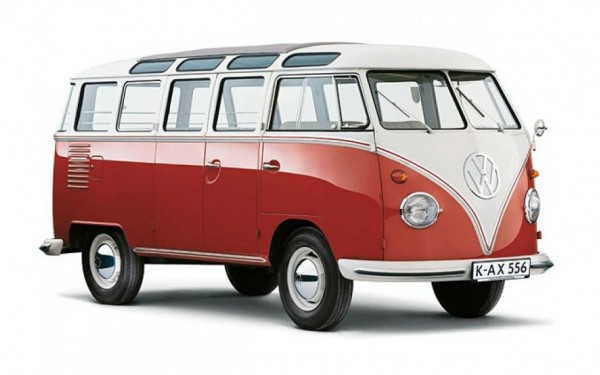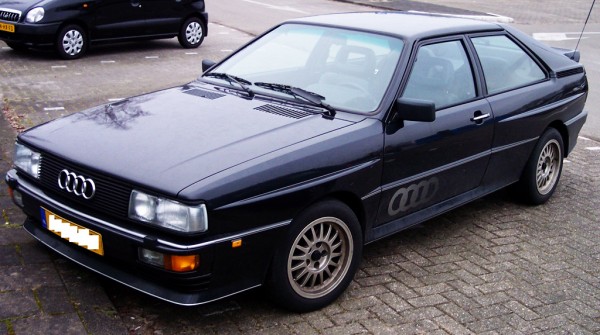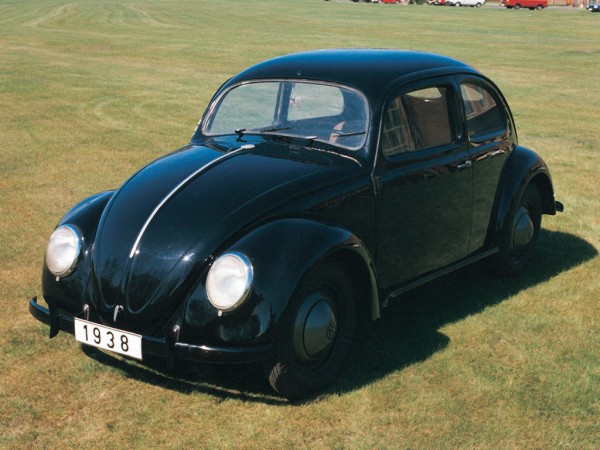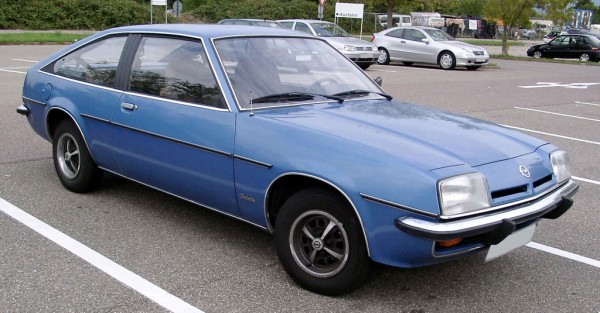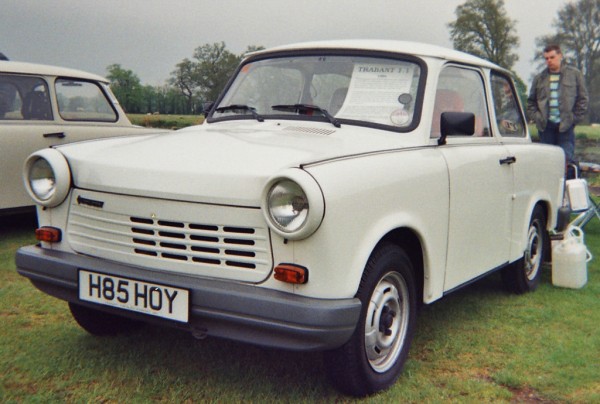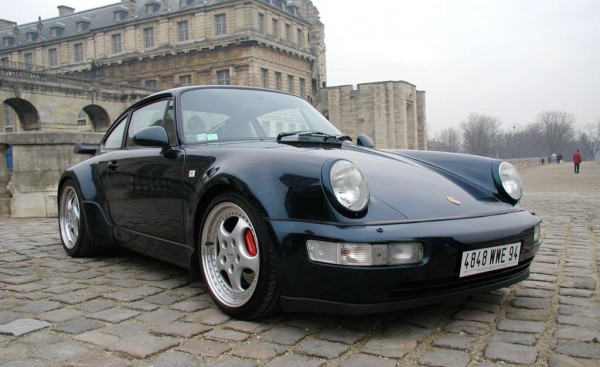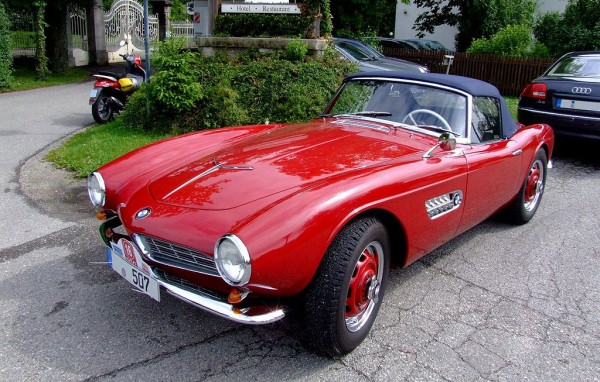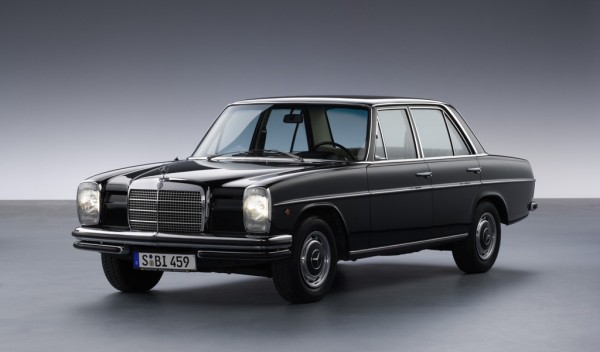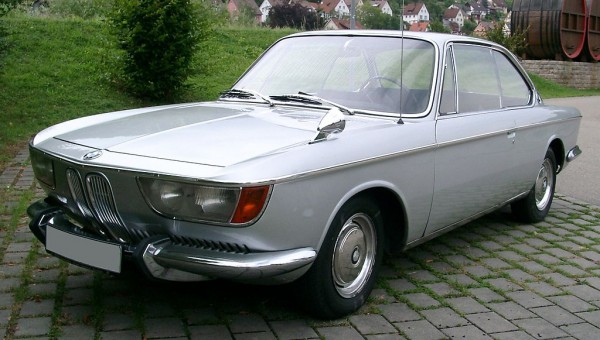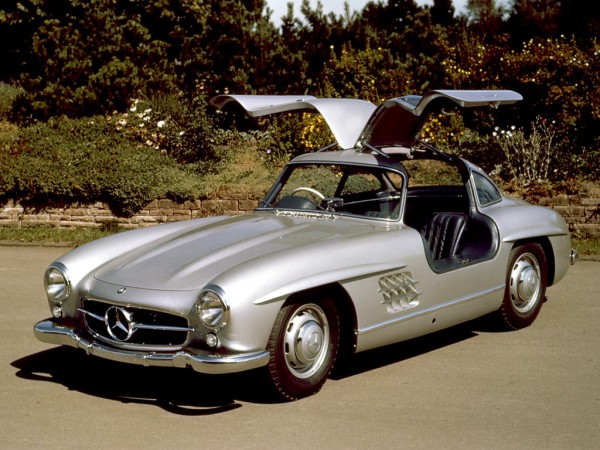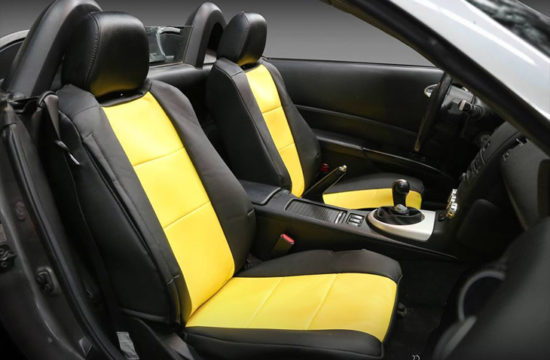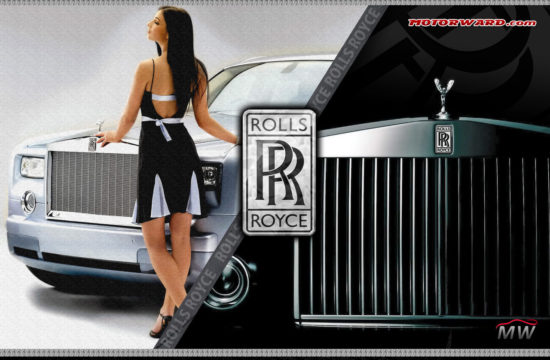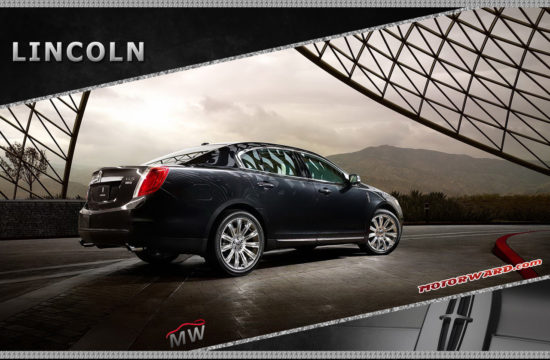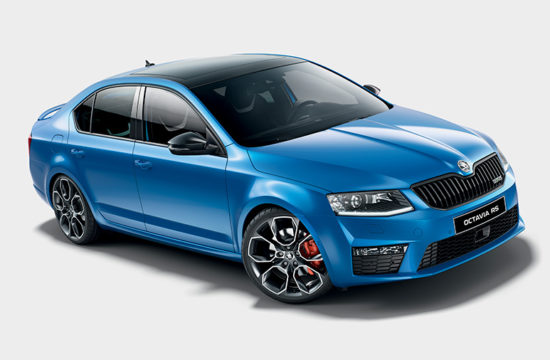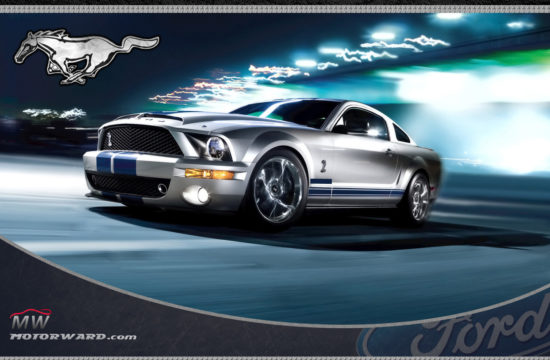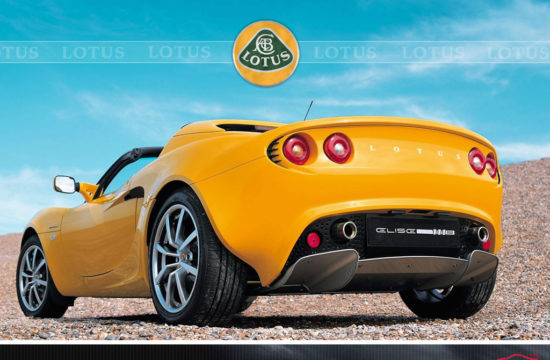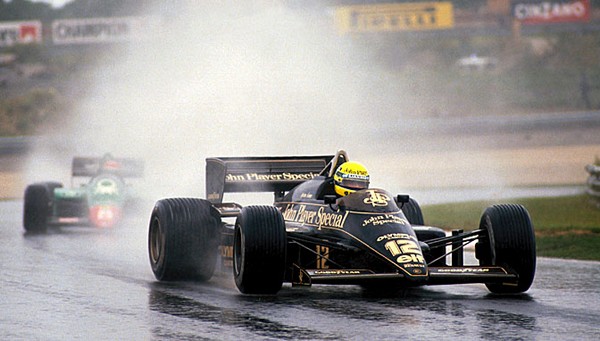Throughout its long and incredible history, the German car industry has always been considered one of the best and most important in the world and reasons to support this are plenty. First of all, it was in Germany where the modern automobile was born, the Benz Patent-Motorwagen patented by Carl Benz in 1886. In the second half of the twentieth century, German cars became synonyms with “reliability” and “build quality” and everyone’s dream list these days most definitely includes a German car.
And there’s a lot to choose from, no matter the tastes, because car makers based in Germany produce all sorts of cars, from “faithful” family cars, to “mighty” off-roaders and “furious” sports cars. Just think about all the brands that were born in Germany and today are successfully building cars: Audi, BMW, Mercedes-Benz, Opel, Volkswagen or Porsche. Actually, three quarters of all cars sold each year in Europe, one of the most important markets, are built by a German-based company. The rest of the world also enjoys these cars, because German car makers are successfully selling their products on all the other large markets such as the North America or China.
It’s true, sometimes style was sacrificed to create the perfect machine and most models built in Germany weren’t or aren’t known for their beauty or extraordinary soul, like most Italian cars, for example. But there were several models that seduced the world with their beauty, engineering or simply by the ideal they were or are embodying. To make a list like this perfect would probably be impossible and we would probably find another ten models just as “legendary” as these ones in an instance, but here are the ten German cars we think are truly legendary:
Volkswagen Bulli
The van was the German car maker’s second model after the famous original Beetle and it was introduced in 1950. The history behind the Bulli is extremely interesting. During World War II, the Volkswagen factory in Wolfsburg was almost entirely destroyed and after the war it was supposed to be dismantled and sent to the UK. But since there was no one interested, the factory resumed the production of the original Beetle quite successfully. During a visit at the factory in the late ‘40s, Dutch importer Ben Pon thought it would be a great idea to build a van on the Beetle’s platform. The first prototypes were a failure, because the Beetle chassis was not strong enough to support a utility van. Also, even if the prototype proved to be good enough, production couldn’t have been started since the factory was at full capacity building the Beetle. But after important changes to the chassis and the car’s aerodynamics were made, the first unit was built in November 1949.
Its internal name was Volkswagen Type 2, but when it was launched, the official name was Transporter or, depending on the body type, Kombi (featured two side windows and a removable raw of rear seats) and Microbus. But these were the official names, because the car got so popular that it received countless nicknames, the most popular ones being the Volkswagen Bus, Minibus, Splittie (due to the split windshield) and…the Volkswagen Bulli, which really stuck. Volkswagen actually considered changing the model’s name to Bulli, but faced opposition from Heinrich Lanz, who was building the Lanz Bulldog tractor.
What really made the Bulli famous was the 1960s, when it became iconic for the Hippie movement in both North America and Western Europe, since it was extremely popular with people involved in this movement. Even today, the Type 2 is known to many as the Hippie Van.
The car also has one of the longest production runs in history, with the final unit being built in December 2013, in Brazil. That’s 64 years, which is absolutely amazing! Brazilian production started in 1976, three years before European production was shut down, in 1979 and a total number of around 10 million units were built overall.
Audi Quattro
In 1977, Jorg Bensinger and Walter Treser (first one was Audi’s chassis engineer, the other one was Pre-Development Director) started working on a high-performance road car with four-wheel drive. It all started when Bensinger thought about using the Volkswagen Iltis’ four-wheel drive system on a regular street car, so the two soon started developing this idea on an Audi 80. Three years later, the Audi Quattro made its debut at the 1980 Geneva Motor Show when the world saw for the first time what would later become Audi’s famous quattro four-wheel drive system. People were excited by this new type of sports car that besides four-wheel drive also featured a 197-hp engine, 210 lb-ft of torque and was able to sprint from 0 to 62 mph in 7.1 seconds, with a top speed of over 135 mph.
Sales started soon after the debut and in the beginning all Audi wanted was to build and sell the 400 units required for WRC (World Rally Championship) homologation. But the car proved to be so successful that the model was put into regular production and more than 2,000 units were sold in the first two years. To differentiate the model from the four-wheel drive system, Audi spells the car’s name “Quattro” (with a capital letter) and the system, “quattro”. Since confusion still existed, the Quattro is often referred to as the Ur-Quattro (“Ur” means “original” in German).
But where the Audi Quattro truly became legendary was motorsport. Even though it was based on the street model, the racing Quattro was seriously upgraded, the engine delivering 300-hp, further increased up to 350-hp by 1983. In 1982, the Audi Quattro won its first Manufacturer’s Championship, with team members Michele Mouton, Hannu Mikkola and Stig Blomqvist. It was 1983 when it won its first Driver’s Championship, being driven by Hannu Mikkola, while Stig Blomqvist brought Quattro its second Championship the next year.
Another competition where the Quattro was extremely successful was the Pikes Peak International Hill Climb Challenge, which it won in six consecutive years, between 1982 and 1987. The car to win the 1986 and 1987 events was the Audi Sport Quattro S1 E2, which at 591-hp is widely regarded as the most powerful car ever to take part in rally racing, because after Group B of WRC was cancelled after the 1986 season, restrictions were imposed on cars’ features and technologies.
Production lasted until 1991 and a total number of 11,452 were sold in Europe and North America.
Volkswagen Beetle
This car probably belongs on any list of legendary models in history, let alone a list of German cars. The famous car was launched in 1938, following Adolf Hitler’s request for an affordable car that would allow a larger number of Germans use the country’s newly built road network.
Ferdinand Porsche’s company was chosen for the project and Hitler sent precise guidelines the model had to follow. Following four years of development, the car was launched as the Volkswagen (“people’s car” in German) being priced the same as a small motorcycle (through a savings scheme designed by Hitler’s government). But not many people got to buy it, because most units that were built in the beginning were military vehicles based on the Beetle, such as the Type 82 Kubelwagen. During the war, civilian production was almost nonexistent, and true success came only after the war ended, when the British Army took charge of Volkswagen’s factory. While the first post-war units also went to the military, civilian production soon started to be more and more important, so ten years later the one millionth Beetle was sold. The car was excellent for the improving road network in Europe, offering better performances than its main competitors, the Citroen 2CV and the Morris Minor. The Beetle was powered by a rear-mounted 34-hp engine that had a fuel economy of 36 mpg and reached a top speed of 71 mph.
Just like its “cousin”, the Bulli, the Beetle has one of the longest production runs in history, with the last unit rolling off the assembly line in Mexico on July 30, 2003. It was the 21,529,464th unit.
Opel Manta
With more than 110 years of history, Opel is one German car maker that couldn’t be missing from this list. The car manufacturer based in Russelsheim in the German state of Hesse produced a lot of fine automobiles throughout its history, but perhaps its most famous one is the Opel Manta.
The Opel Manta was launched in 1970, just a year after Ford unveiled the Capri coupe, which was supposed to be for Europe what the Mustang was to the United States. Interesting about the Manta’s launch is that it was unveiled before the new Opel Ascona, on whose platform it was based, and not after. The first generation was built between 1970 and 1975 and was available with several engine choices, starting from a 1.2-liter unit producing 60 hp up to a 1.9-liter that delivered 105 hp (offered as standard on all cars sold in the United States). Because, yes, the Manta was one of the few Opel models to be sold across the Atlantic, where they were imported by General Motors and sold in Buick dealerships. Actually, the Manta and the Ascona A were the last Opels to be imported in the United States, because GM cancelled all Opel imports in 1975. Even though, mechanically, the car was almost identical to the Ascona, the Manta had superior aerodynamics and quickly became one of the best handling sports cars available at that time.
As for the second generation, called Manta B, it was built between 1975 and 1988 and it was also heavily based on the new (at that time) generation Ascona. However, its styling was influenced by the Chevrolet Monza and was more dynamic than the Ascona’s. Several important updates, including a new line of engines, were made in 1982 and the last unit was built in 1988, being replaced by a new model, the Opel Calibra.
Trabant
The most popular car in the former East Germany, the Trabant was built by VEB Sachsenring Automobilwerke Zwickau in Saxony. The first unit left the production line on November 7, 1957. Interesting is that original plans were for a three-wheeled motorcycle, but turned into a regular automobile on the way. At the time of its launch, the Trabant was a good deal, offering four seats and lots of luggage space for its size. Its main disadvantage was the engine, a small 500 cc unit that produced only 18 hp. The car received several upgrades throughout its life, but it basically remained unchanged until production ended in 1991 and many parts from a 1990 Trabant could have been used on a 1960 one and the other way around.
The car’s looks, its small engine and the rumor that its body was made of cardboard brought a lot of jokes upon the Trabant and almost all Europe was mocking it. Except East Germany, of course, where people looking for a new car didn’t have too many options. The “cardboard” part was not true, because the Trabant’s body was actually made from Duroplast, a very light and strong material whose structure is pretty similar to fiberglass. It’s true that different recycled materials such as cotton and even paper are used to produce Duroplast, but that has nothing to do with its final properties. Another one of Trabant’s drawbacks was the extremely long waiting time, because the East German government considered other industries more important and raw materials were allocated there first, often causing shortages at the Trabant factory. And it was not rare for a used Trabant to be more expensive than a new one because it was available immediately and you didn’t have to wait a few months or even years.
But leaving all these aside, bottom line was that the Trabant was a great car for what it was supposed to be. A cheap and practical car that was also extremely affordable to maintain and repair. Also, there was something about it that made it extremely “lovable”, because you won’t see a Trabant owner or former owner that isn’t in love or nostalgic about the car. It wasn’t fast (0 to 62 mph was done in 21 seconds), not extremely fuel efficient and CO2 emissions were through the roof, but it had something special and owners always took good care of them.
In 1991 when production ended, almost 3.1 million Trabants had been built, most in East Germany, plus a part exported to countries in the former Eastern Bloc. Recently, a German company bought the rights to the name and unveiled several concepts of a modern Trabant, including an electric one, but so far there’s nothing certain about the brand’s future.
Porsche 911
With an unmistakable silhouette created in 1963, the Porsche 911 has basically become the definition for the “German sports car”. Today, the model is at its sixth generation and is still using the same rear-mounted boxer engine architecture.
Following the success of the Porsche 356, the German car maker started working on its replacement in the late 1950s. The first sketches were drawn by Ferdinand A. Porsche (or Butzi, as the car industry remembers him) in 1959. Four years later, the car debuted at the 1963 Frankfurt Motor Show and production started in September 1964. The model was supposed to be named Porsche 901, but Peugeot officials claimed to have exclusive naming rights for any car name that had three numbers and a zero in between, so Porsche changed the car’s name to 911.
The first 911s were powered by a six-cylinder boxer engine that delivered 128 hp and offered four seats, even though the rear seats were suitable for children only. The famous Targa version was introduced in 1967 and featured removable roof panel and plastic rear window which allowed drivers to go open-top. The first turbocharged 911 was launched in 1974 and was powered by a 3.0-liter engine that produced 260 hp (later, in 1978, power output was increased to 300 hp). Even though the Porsche 911 Turbo was difficult to drive and turbo lag was pretty extreme, the car was popular for its impressive acceleration. With several upgrades, the first generation 911 was built until 1989, when it was replaced by the 964 series, a car which was also a movie star, being featured in blockbusters like “Bad Boys” (starring Will Smith and Martin Lawrence) or more recently in the popular TV series “Californication”.
In 1994, Porsche introduced the new generation 911 (internally named 993), which was replaced three years later by the 996 Series. The fourth generation 911 brought one of the most important changes in the model’s history, replacing the air-cooled engines with water-cooled ones. The car also featured a completely new design, which even though was clearly related to the original 911, it represented a major evolution. Despite these features, the 911 kept many features that made it the sports icon it is today.
The fifth generation 911, the 997, was introduced in 2005 and one of the most notable upgrades included a comeback of the “bug eye” design for the headlights, because the 993 was quite criticized for its headlights design, which was almost similar to the entry level Boxster.
The current generation (the sixth) was launched in 2012 and its main highlight is the entirely new platform, which is the model’s third new platform since 1964. It was unveiled at the 2011 Frankfurt Motor Show and sales started a year later, when it also won the 2012 World Performance Car, the same year its creator, Ferdinand A. Porsche died.
BMW 507
The main artisan behind the BMW 507 was U.S. automobile importer Max Hoffman who convinced BMW management to build an affordable roadster based on the BMW 501 and BMW 502. After several failed attempts, designer Albrecht von Goertz created the final design and in 1955 the BMW 507 was unveiled for the first time at the Waldorf-Astoria Hotel in New York. Everyone was thrilled about the car and one year later production kicked off in Germany.
The car seduced everyone since the beginning. It was powered by a 3.2-liter V8, two carburetors, featured a four speed manual transmission and the engine produced 150 hp at 5,000 rpm. With a curb weight of around 2,900 pounds, the BMW 507 accelerated from 0 to 62 mph in 11.1 seconds and reached a top speed of 122 mph. Unfortunately, the 507 was never a financial success for BMW, because production costs were a lot higher than anticipated and made the car’s price twice of what Hoffman’s predictions were based on. And in the three years the 507 was in production, the German car maker lost money on each unit built and they almost went bankrupt. In 1959, when the last BMW 507 was built, a total number of 252 units had been delivered.
Despite its terrible fate, the BMW 507 remains an icon for the German car industry. With around 200 units left today, they are wanted by car collectors all over the world, with each unit being valued at around $1,000,000. Also, in the past decades, the 507 has always been popular among celebrities such as Hans Stuck, Elvis Priestley, Ursula Andress, John Surtees or Bernie Ecclestone. The model was the main source of inspiration for BMW’s recent roadsters, the Z3 and Z4, not to mention the limited edition Z8, which is also a highly valued model.
So even though it was a catastrophic project for BMW and nearly killed the German car manufacturer, the BMW 507 is widely regarded as one of the greatest roadsters ever built and that’s why it deserves its spot on this list.
Mercedes-Benz W114
Even though many consider its successor, the W123, to be more famous, we think the W114 is actually Mercedes’ true star, being widely regarded as the modern E-Class’ “ancestor”. Of course, the W123 is the German car maker’s most popular model ever, with a total of 2.7 million units sold between 1976 and 1985, but when it comes to build quality and impact, you can’t take away W114’s merits.
The model was introduced in 1968 and was Mercedes’ first car after World War II that used a completely new chassis and not one based on a previous model. Its design was the work of Paul Bracq, who was Mercedes’ head of design at that time and who also worked for Peugeot and BMW throughout his career. Today, he is a member of the jury in many automotive events such as the Pebble Beach Concours d’Elegance.
The W114 came in three versions, 230, 250 and 280, depending on the engine used and was also available as a coupe, starting with 1969. The W115 facelift was introduced in 1973 and production lasted until 1976, when it was replaced by the W123 we were talking about earlier. Besides being extremely successful (more than 1.9 million units built), the W114 and especially the W115 are considered to be some of the most reliable cars ever built. Recently, a Greek taxi driver who owned a W115 with 4.6 million kilometers on the odometer donated the car to the Mercedes-Benz museum.
BMW 2002
Widely regarded as the predecessor of the modern 3-Series (which was launched as its replacement), the BMW 2002 has a great story behind it. The “02” series was introduced by BMW in 1966, when the 1600-2 model was launched (the “-2” stood for “two doors”). The car was powered by the already popular 1.6-liter M10 engine that produced 85 hp and 96 lb-ft of torque and sales weren’t going bad at all.
However, there were some people who thought the car could be even better, such as BMW’s director of product planning, Helmut Werner Bonsch and Alex von Falkenhausen, the M10 engine’s creator. Without the other knowing, the two installed a 2.0-liter engine on their personal cars, significantly improving performances. When they talked about it, they decided to try and convince the BMW management that a 2.0-liter “02” would be a great idea. Their idea also delighted Max Hoffman, the same U.S. importer that came up with the 507 idea. The board agreed to give the project the green light and so a legend was born.
Manufactured between 1968 and 1975, the BMW 2002 was also available as a Touring and cabriolet. And that’s not all, because the BMW 2002 Turbo was launched in 1973, at the Frankfurt Motor Show, becoming the first turbocharged car to go into mass production. Its engine delivered 170 hp and 180 lb-ft of torque, but only 1,672 units were built because the 1973 oil crisis started.
Mercedes-Benz 300SL “Gullwing”
Probably the most famous German car of all time, the Mercedes-Benz 300SL was introduced at the 1954 New York Auto Show. The “300” represents the engine displacement, 3.0-liter, while the SL stands for “Sport Leight” (German for “Sport Light”).
But you may ask yourself why would a German car be unveiled for the first time at an American motor show. Well, that was because the man who pushed Mercedes into building the car was no other than the same Max Hoffman. The businessman was convinced that wealthy Americans would definitely buy a high performance sports car that also offered a certain level of luxury. That’s why he proposed Daimler to consider making a street version of the already famous W194 300SL racing car which won the 24 Hours of Le Mans race in 1952.
The production 300SL featured a lot of innovations, especially regarding aerodynamics and chassis. First of all, its trademark feature, the gullwing doors, were not some design gimmick, but more of a necessity, since the chassis design wouldn’t leave room for two conventional doors that would also offer acceptable access. Still, access was extremely difficult and a steering wheel with a tilt-away column was introduced later. The engine was also extremely impressive. Featuring Bosch’s mechanical direct injection system, the power output was around 220 hp which, combined with the four speed manual transmission, allowed the 300SL to achieve a top speed of 161 mph, making it the fastest production car of its time.
Even though the 300SL was built between 1955 and 1963, the gullwing version was in production only for the first two years, being replaced by the roadster version in 1957. The total number of units sold was around 1,400, 80 percent of which went to the United States. Today, it is widely regarded as one of the greatest sports cars ever built, and auction prices are usually around $1,000,000, with special editions being sold for as much as $4 million or more.
Also, in 2010, Mercedes decided to pay homage to the 300SL and introduced the high-performance Mercedes-Benz SLS AMG. While not the fastest car around, the SLS AMG had some impressive specs that would make its spiritual predecessor proud: 6.2-liter V8, 563 hp and 479 lb-ft of torque, o to 60 mph in 3.2 seconds and top speed of 204 mph. Several other versions were built, with the most powerful one being the SLS AMG Coupe Black Edition whose engine was upgraded to 622 hp and 468 lb-ft.
Like we said in the first part of the article, making an accurate list with all the legendary German cars is a difficult task, considering all the great cars built in this country throughout history. How about you? What do you think we missed? Or what do you think should be listed in a “part II” of this article?

